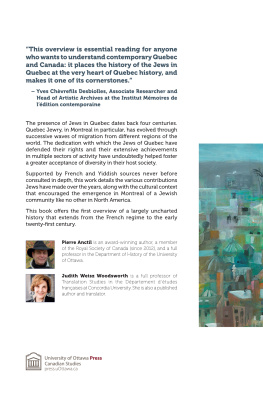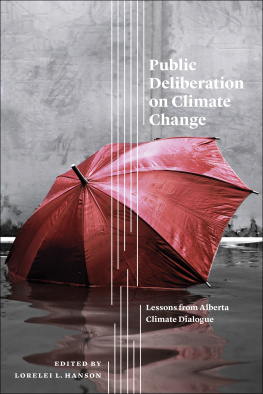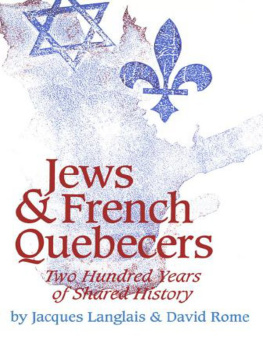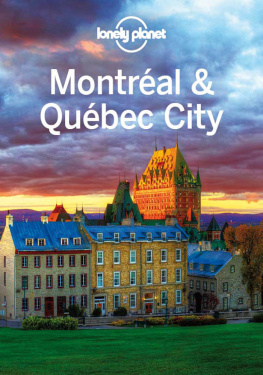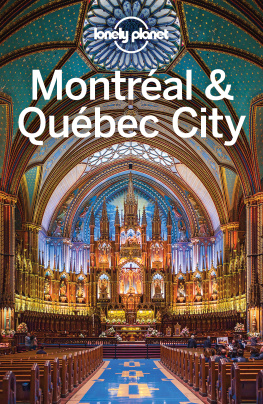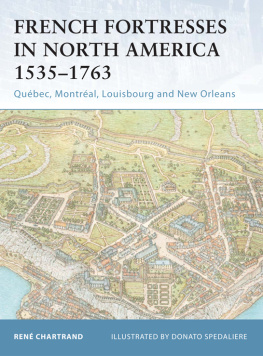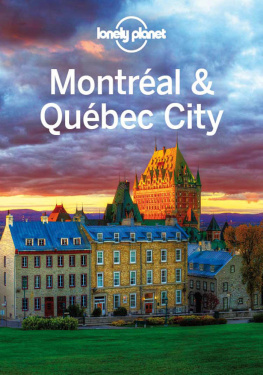Table of Contents
Landmarks
Page List

HISTORY OF THE JEWS
IN QUEBEC
HISTORY OF THE JEWS
IN QUEBEC
by
Pierre Anctil
Translated by
Judith Weisz Woodsworth
University of Ottawa Press
2021

The University of Ottawa Press (UOP) is proud to be the oldest of the Francophone university presses in Canada as well as the oldest bilingual university publisher in North America. Since 1936, UOP has been enriching intellectual and cultural discourse by producing peer-reviewed and award-winning books in the humanities and social sciences, in French and in English.
www.press.uottawa.ca
Library and Archives Canada Cataloguing in Publication
Title: History of the Jews in Quebec / Pierre Anctil ; translated by Judith Weisz Woodsworth.
Other titles: Histoire des Juifs du Qubec. English
Names: Anctil, Pierre, author. | Woodsworth, Judith, translator.
Series: Canadian studies (Ottawa, Ontario)
Description: Series statement: Canadian studies | Translation of: Histoire des Juifs du Qubec. | Includes bibliographical references and index.
Identifiers: Canadiana (print) 20210120150 | Canadiana (ebook) 20210120169 | ISBN 9780776629483 (softcover) | ISBN 9780776629513 (hardcover) | ISBN 9780776629490 (PDF) | ISBN 9780776629506 (EPUB)
Subjects: LCSH: JewsQubec (Province)History.
Classification: LCC FC2950.J5 A5213 2021 | DDC 305.892/40714dc23
Legal Deposit: Third Quarter 2021 Library and Archives Canada Printed in Canada Production Team Copy editing
Proofreading | Tanina Drvar
Michael Waldin | | Typesetting | Nord Compo | | Cover design | Lefranois, agence marketing B2B |
Cover image
Ghitta Caiserman (19232005)
Montreal at Night
Oil on canvas
122 cm 122 cm | Les ditions du Boral 2017 for the original edition. Original title: Histoire des juifs du Qubec. Translated from the French language. University of Ottawa Press 2021 for the English edition. All rights reserved. No part of this publication may be reproduced or transmitted in any form or by any means, or stored in a database and retrieval system, without prior permission. In the case of photocopying or any other reprographic copying, please secure licenses from:
Access Copyright
www.accesscopyright.ca
1-800-893-5777 |
 | For foreign rights and permissions:
www.iprlicense.com |
This book was published with the help of a grant from the Canadian Federation for the Humanities and Social Sciences, through the Awards to Scholarly Publications Program, using funds provided by the Social Sciences and Humanities Research Council of Canada.
The University of Ottawa Press gratefully acknowledges the support extended to its publishing list by the Government of Canada, the Canada Council for the Arts, the Ontario Arts Council, the Social Sciences and Humanities Research Council and the Canadian Federation for the Humanities and Social Sciences through the Awards to Scholarly Publications Program, and by the University of Ottawa.

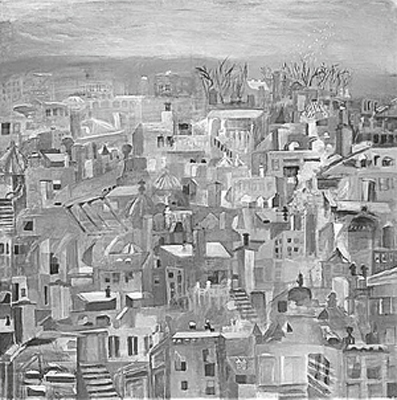
Montreal at Night by Ghitta Caiserman
The cover illustration is a painting by Ghitta Caiserman (19232005), a Montreal artist who grew up in a Romanian Jewish family living in the Plateau Mont-Royal neighbourhood. Her father, Hannaniah Meir Caiserman, and her mother, Sarah Wittal, held a literary salon at their home. At a very early age, Ghitta came into contact with the artistic elite of Montreal, notably with painter Alexander Bercovitch, who was her first mentor. Ghitta studied at the Parsons School of Design in New York City, returning to Montreal in 1947 with a very keen social conscience. She taught for several years at Concordia University and the Saidye Bronfman Centre for the Arts. In 2000, she won the Governor Generals Award in Visual and Media Arts. She was a member of the Jewish Painters of Montreal, an artists group that emerged during the 1950s and exerted an enduring influence on the visual arts in Quebec in the second half of the twentieth century.
Pierre Anctil
Translated by Judith Weisz Woodsworth
For Chantal, who inspired me to write this book.
Table of Contents
Jewish population in Canada and Montreal according to the Canadian census, 18311891 |
Number of Jewish immigrants to Canada, 19011960 |
Jewish population in Montreal according to the Canadian census, 18712011 |
Jewish population in Canada according to the Canadian census, 18712001 |
Jewish population in selected Canadian cities according to the 1931 and 2001 census |
Jewish urban density by neighbourhood, Montreal, 1938 (based on 1931 census data) |
Jewish immigrants as a percentage of the total number of Canadian immigrants, 19011960 |
Jewish population in selected Canadian cities according to the 1951 census |
Jewish population in selected Quebec cities excluding the Island of Montreal according to the 1951 census |
Jewish population as a percentage of the general population in selected Canadian cities according to the 1951 census |
Jewish urban density, Montreal, 1951 |
Jewish urban density, Montreal, 1961 |
Jewish urban density, Montreal, 1971 |
Jewish urban density, Montreal, 1981 |
Jewish urban density, Montreal, 1991 |
H istoire des Juifs du Qubec is the culmination of research that I have conducted over the past thirty years. It gives a voice to a minority population that had previously been treated tangentially in Quebec history, and primarily in the context of specific anti-Semitic attitudes. The central role in this book is played by individuals who fall outside of the colonial context of France and Great Britain. As they joined French and British settlers, the Jews of Quebec brought with them a religious and cultural tradition rooted in their sacred texts and reflecting the historical experience of the Jewish European diaspora over at least two millennia. The interpretation presented in the book hinges on the perceptions and reactions of a symbolically very significant minority as it came into contact with the prevailing legal, political, and social environment of Quebec, all the while forging and preserving its own identity in relation to the dominant forces at play.
Over time, other French-speaking scholars have begun to take part in efforts to clarify the history of the Jews in their midst and to gain a deeper understanding of their contributions. These historians, whose findings are amply cited in these pages, gradually began to conceive of themselves as a new school of interpretation within the Qubcois historical tradition. As a body of knowledge on the compelling Jewish presence in Quebec society took shape, buttressed by French and Yiddish sources never before consulted seriously, it gave rise to a fresh interpretation of events and contexts that had been examined earlierand differentlyby Anglophone authors working in the field of Canadian Jewish studies. In turn, the Qubcois academic milieu was also challenged by the findings of the new immigration scholars and forced to re-examine some of its basic assumptions. The inclusion of a well-structured, long-term Jewish narrative within the larger context of Francophone Quebec society has led to a certain amount of reconsideration and second thoughts. It will come as no surprise to the enlightened reader that history is continually re-examined in this way, taking into account a different set of circumstances or gaining access to new elements within the historical record. The historical narrative cannot be allowed to perpetuate ideology or to sustain dogma or canonical pronouncements; rather, it must be able to evolve and respond to new data and emerging insights.

